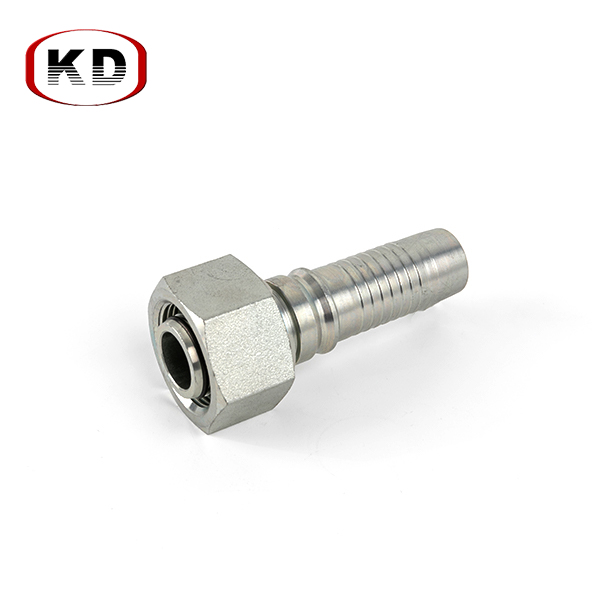Many years of foreign trade experience.
Strong production capacity, and massive stock to make sure the delivery time.
ISO quality process to make sure every piece qualifies.
One-to-one service, OEM service, provides alternative efficient solutions.

 By Admin
By Admin
Internal Geometry and Surface Finish: DIN 24° adapters are designed to facilitate the connection of components within a system, but their internal geometry can significantly impact pressure loss. The adapter’s internal shape, including the radius of bends and transitions, directly affects how fluid flows through it. Sharp bends or abrupt changes in the flow path increase turbulence and resistance, leading to higher pressure drop. The surface finish of the internal passages plays a crucial role. Rough surfaces can cause additional friction and turbulence, exacerbating pressure loss. High-quality DIN 24° adapters are engineered with smooth, well-contoured passages to reduce these effects and minimize pressure drop.
Fit and Sealing: The integrity of the connection between the DIN 24° adapter and the system components is vital for maintaining pressure. A poorly fitted adapter or inadequate sealing can lead to leaks, which not only cause pressure loss but can also lead to system inefficiencies and potential damage. Proper alignment and the use of appropriate sealing methods (such as O-rings or gaskets) are essential to ensure a secure connection that prevents pressure loss. Regular inspection and maintenance are required to ensure that seals are intact and that the adapter is properly aligned with the connected components.
Flow Restriction: The adapter must match the flow requirements of the system to avoid creating restrictions. A mismatch between the adapter's flow capacity and the system's requirements can lead to bottlenecks, increasing pressure drop and reducing system efficiency. When selecting a DIN 24° adapter, it is important to consider not only the adapter's dimensions but also its flow characteristics to ensure it does not inadvertently restrict the flow.
Turbulence and Flow Disruption: Flow rate through a DIN 24° adapter can be significantly affected by turbulence caused by design flaws. Adapters with internal structures that induce excessive turbulence, such as sharp edges or abrupt transitions, can disrupt the fluid flow, leading to decreased flow rates. To mitigate these issues, adapters should be designed with gradual curves and streamlined passages that promote laminar flow, reducing the potential for turbulence and ensuring more efficient fluid transport.
Compatibility and System Integration: Ensuring that the DIN 24° adapter is compatible with the rest of the system is crucial for maintaining optimal flow rates. The adapter must align correctly with the connected components and be designed to handle the system’s flow requirements. Any misalignment or poor integration can lead to increased resistance, reduced flow rate, and potential system inefficiencies. Proper installation procedures and regular alignment checks are necessary to maintain the integrity of the flow path and overall system performance.
Material and Construction Quality: The material from which the DIN 24° adapter is made affects both its durability and its impact on flow rate. High-quality materials that are resistant to corrosion, wear, and other environmental factors will perform better and maintain consistent flow rates over time. Precision in manufacturing is also crucial; adapters with well-machined surfaces and accurate dimensions will support better flow performance and have a lower impact on the overall system.
Regular Maintenance and Inspection: To ensure that DIN 24° adapters continue to perform effectively, regular maintenance and inspection are required. Over time, wear and tear can affect the adapter’s performance, potentially leading to increased pressure loss or reduced flow rates. Routine inspections can help identify issues such as wear, corrosion, or misalignment before they cause significant problems. Timely replacement of worn or damaged adapters is crucial for maintaining system efficiency and preventing downtime.
Metric Female 24°Seal Low-friction Rugged Interlock Fittings
